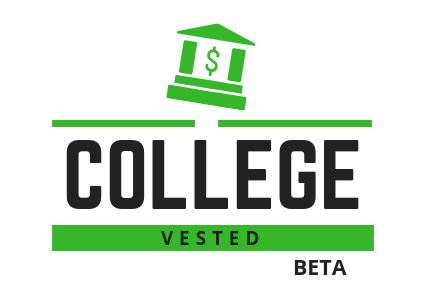Student loans dim the lights on the big production that takes place the moment we make our college decisions. When asking a group of college graduates whether or not their student loans signify a meaningful financial risk, the mixed responses you may receive can do little to ease your worries. Most of us have them at one point or another, yet each start of a new semester in college feels like a fighting match against looming student loans.
As a college student, cyphering through those spam emails about private student loan options and really understanding the options that exist beyond your financial aid package becomes necessary.
The ABCs of Loans

First and foremost, understanding who provides the loan has a lot of importance. Federal loans given to students from the U.S government operate differently than private loan providers. Typically, federal loan repayment lasts no longer than ten years. Federal loans break down into two different categories. Your school may offer either a subsidized loan or an unsubsidized loan. In a nutshell, subsidized simply means having the support of the government while during school, whereas unsubsidized loans cannot cover you if you fail to make payments while in school. When it comes to how long you have before meeting payment requirements, the options range. For example, I have a subsidized loan known as a Stafford loan. Federal subsidized loans do not accumulate interest while you attend school, so I chose this option over the unsubsidized loans offered in my package. Only students with financial need qualify for subsidized loans, whereas unsubsidized loans help out students in any financial situation and accrue interest right away.
A downside to taking out an unsubsidized loan centers around the unfairness of interest. Once it starts, it becomes increasingly difficult to pay it off. Both unsubsidized and subsidized loans offer a one-time grace period of 6 months immediately after graduation without the pressure of making a payment. My goals consist of saving half of my paycheck from work each month to go towards what I need to pay after that grace period. The ideal time to save as much money as possible to pay back loans includes when parents and caregivers do not expect 100% independency from you. Take advantage of all the free money you receive now by saving it to spend on necessities and pay your loans on your own later. If student loans make up a big portion of how you pay for college, saving prevents a lot of stress after graduation. Finances can get risky if you do not remain mindful of student loans, especially in competitive career fields where pay rates fluctuate after college.
The Private Loan Life Boat

You could think of most private loans as unsubsidized loans since interest rates tend to pick up in the first few months after you take the loan out. Always get the bigger picture on your financial situation first before reaching out to private companies. “We advise to go through the federal option first because it goes through a lower interest rate,” Wells Fargo Consultant Taylor Bren said. However, private loans have benefits as well. Banks like Citizens and Wells Fargo offer private loans that can cover up to 100% of your tuition cost.
One of the most popular and oldest private student loan providers, known as Sallie Mae, can meet 100% of your tuition costs. Other than interest rates, other factors can also cause extra fees without your knowledge if you do not check the terms first. For example, my Stafford loan from the government has an origination fee, whereas Sallie Mae gives you the exact amount that you ask for without taking out any money to pay an origination fee. So instead of my $2,000 loan covering $2,000, it actually covered $1,732. Sallie Mae provides multiple options for repayment that include in-school payment options. You can set up a fixed repayment option where you pay a certain amount every month or defer payments until after graduation. The payment period can end up lasting as long as 20 years or as short as 5 years depending on how much you borrow. However, when choosing a loan provider, communication preferences hold more importance than it may seem.
Make Your Provider Your New Bestie

In my experience, when calling for information on loans speaking with a representative became a challenge with several companies. Since I don’t have a membership, getting a live person on Sallie Mae’s phone service led to a dead end. However, when calling Wells Fargo the process didn’t last more than 10 minutes before I could speak with someone about any questions that I had. A key to keeping up with your loans includes communication. For federal subsidized or unsubsidized loans, Federal Student Aid assigns you a loan service provider to get in touch with before the end of your four years for you to know exactly what to expect at graduation.
Give Your Spending Habits A Vacation

Taking out a student loan does not mean your bank account runs dry every semester. In a lot of cases, you will receive little blessings known as refund checks. Excess money that might remain after taking out a loan returns to your account if deemed necessary by your school and your loan provider. A lot of college students, who do not understand refunds, make the mistake of looking at them as gifts, but many adults and loan consultants advise otherwise. “Generally speaking it is a mistake to use loan refunds for anything that is not absolutely necessary. Think things like books and food during school. This is because student loan money is borrowed with interest, so every dollar spent on ‘personal use’ actually costs much more,” Student Loan Sherpa blogger Michael Lux said. A big part of adulting includes resisting the urge to splurge after each check deposit you receive.
Sometimes schools offer more financial aid if you ask. For example, NYU has a financial aid appeal option. My academic advisor told me about it, but I had no intentions of trying it out since I didn’t think they would help my case out of the pile of other students who also need more money. I filled out the form anyway and it turns out the financial aid office did listen and gave me an emergency scholarship which helped me have more money left over for textbooks this semester.
The Background Vocals To The Big Loan

Most college students do not have any credit history established, so some federal loans and many private loans use cosigners to test out whether you can handle the responsibility of completing payments. A cosigner counts as a family member or anyone who trusts you enough to put on paper that they will take on the responsibility of paying for your loan if you never pay. Most people with student loans themselves opt out of cosigning. For most federal loans you do not need a cosigner. “If you do not have a good credit score, the best option will be federal student loans as these are based on need and not your credit,” National Foundation for Credit Counseling Associate Marketing Manager Courtney Nagle said. Some providers like Sallie Mae release a cosigner after 12 months in certain situations.
Look to Infinity and Beyond for Options

Remember that every financial package you get offers a plan but doesn’t always consider everything. “FAFSA can be a little tricky as it lists the grants right above loan offerings. Many students think the loans are being offered for free or that they must accept them,” Benjamin E. Mays High School Advisor Glenda Dowdy said. In my experience, NYU offered a parent PLUS loan for $20,000 which became very confusing for me in the process of choosing schools. However, after researching other options I found an easier route that would not risk my dad’s credit score. Consider options like veteran benefits or scholarships for family situations that you may have forgotten to include in your college essays.
“The real question students should ask is whether the amount they are borrowing is a good investment,” Lux said. Although taking out a loan costs you nothing in the moment, in the long-run using it for a school you really believe you can flourish at makes it more worthwhile. No one would spend thousands of dollars on a house they only kind of want to live in, so don’t shorthand yourself with your education either. Unfortunately, loans never disappear. You can get forgiveness by working as a teacher for five years in a low-income school and certain government jobs also grant forgiveness. Forgiveness means the government forgives your debt in exchange for your service to your community. Even if you decide not to finish school, loan payments remain permanent regardless, so looking into jobs that offer forgiveness may ease your nerves.





